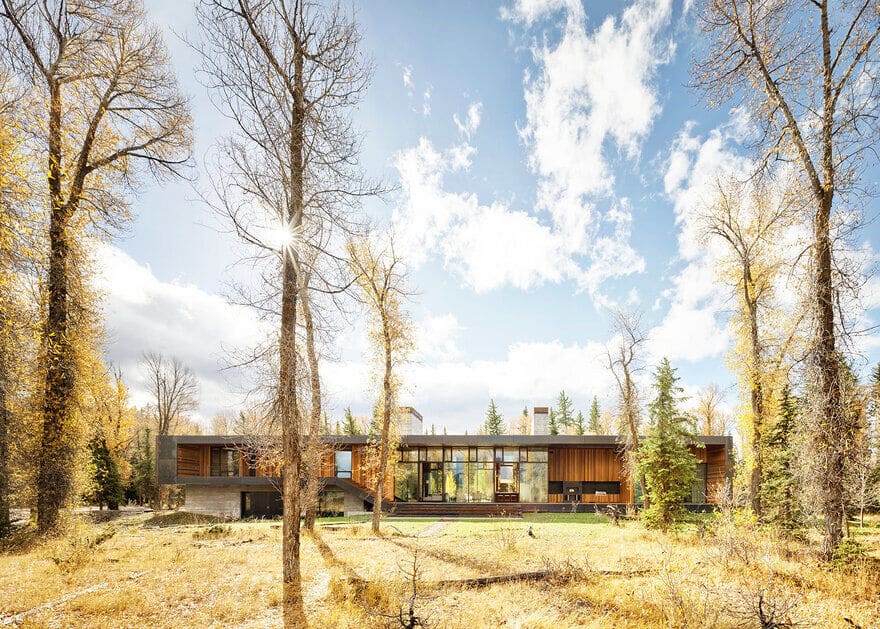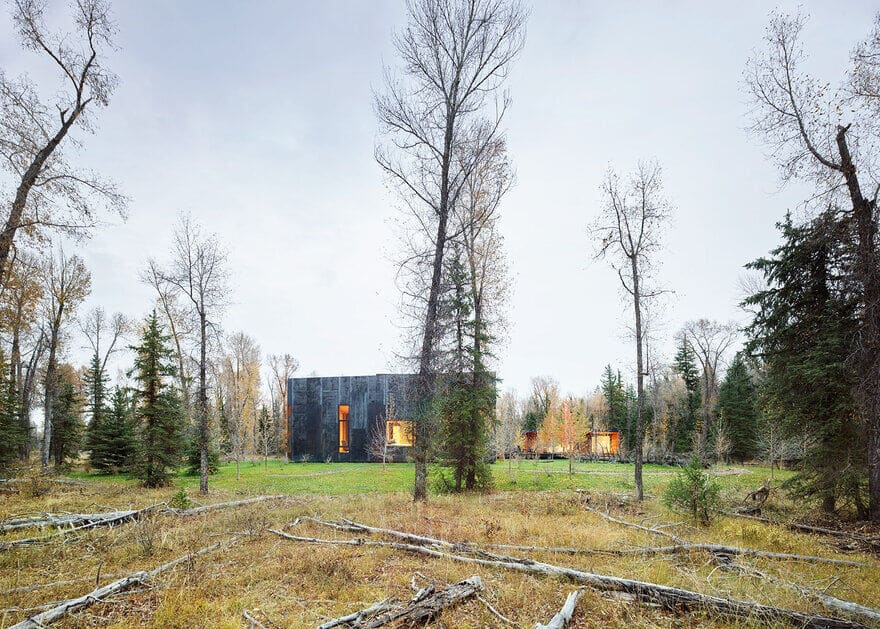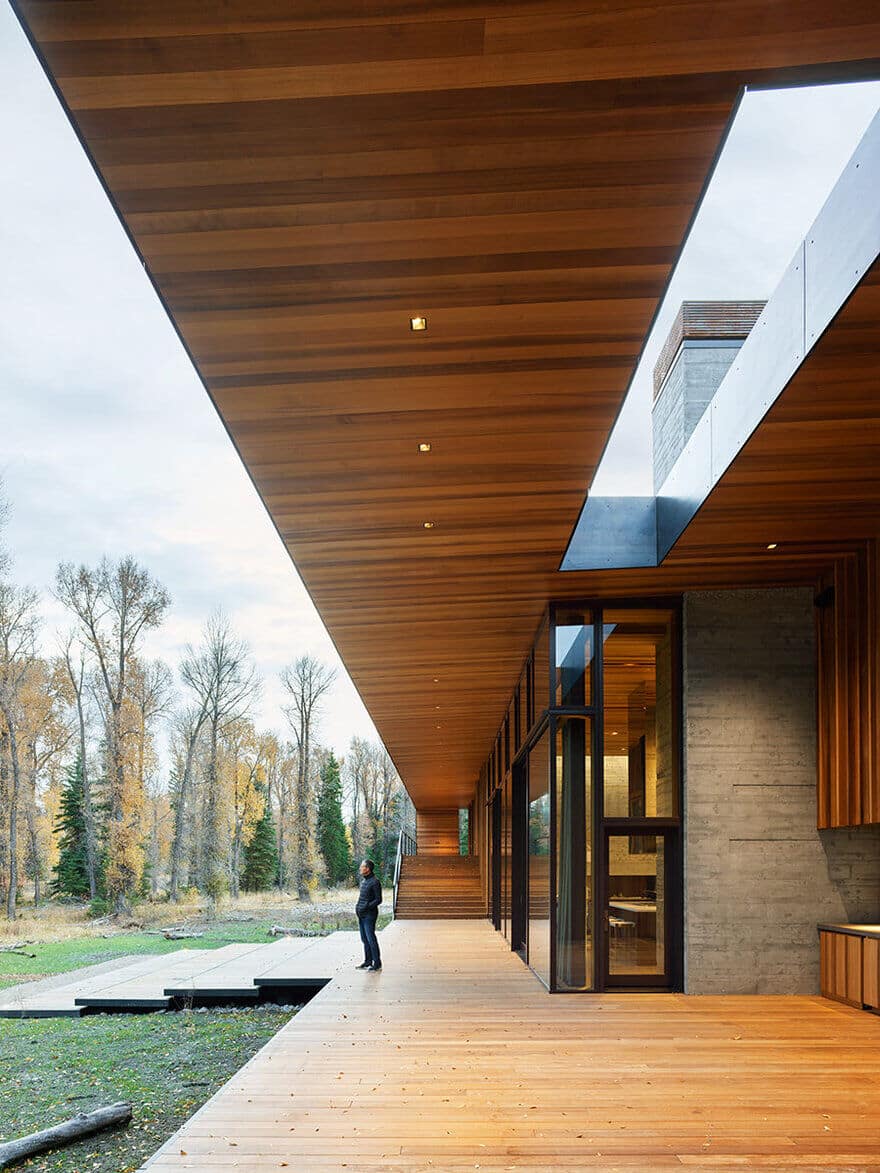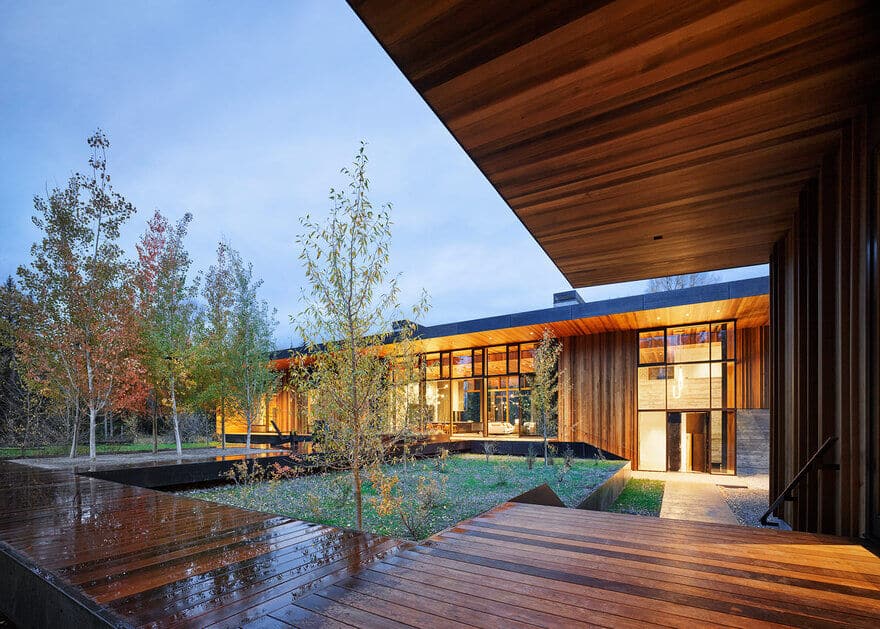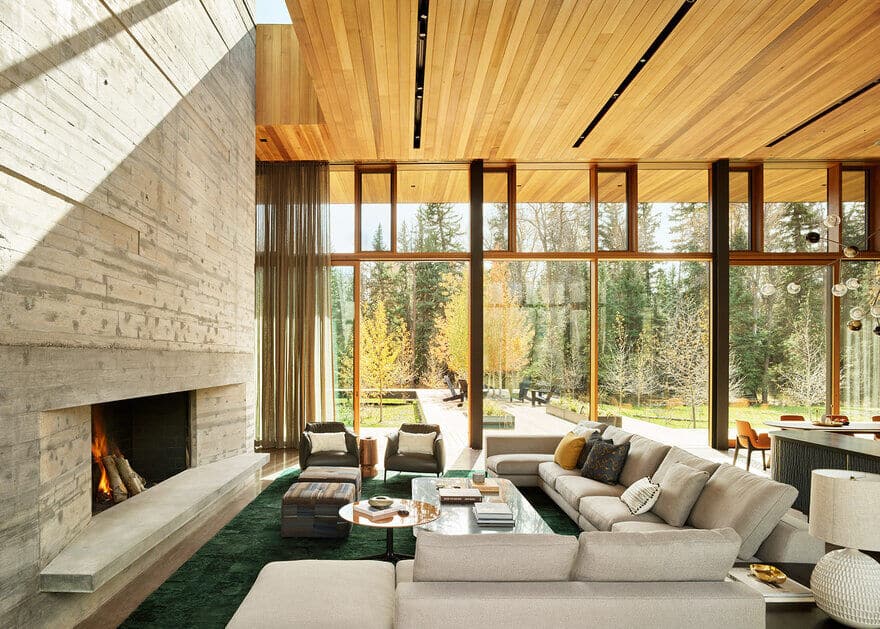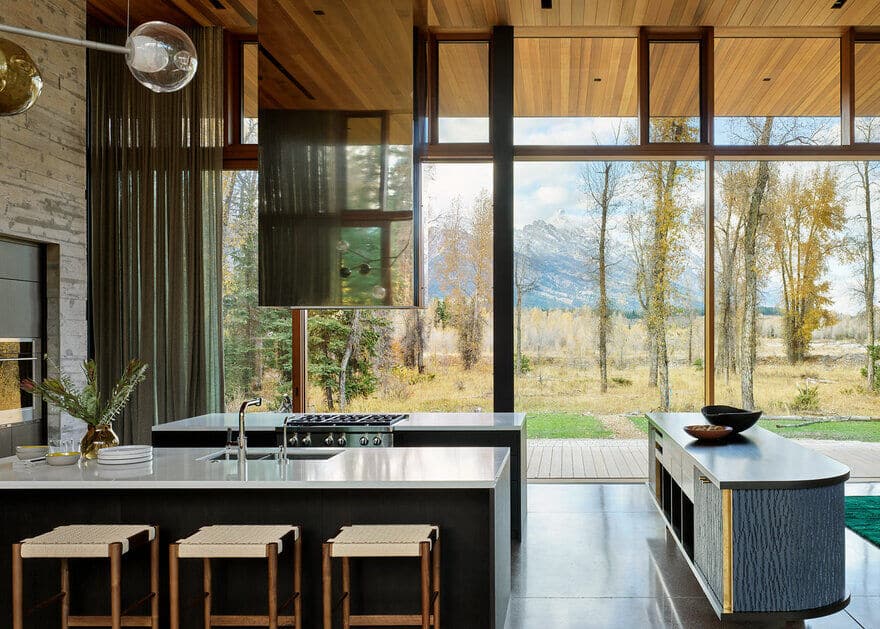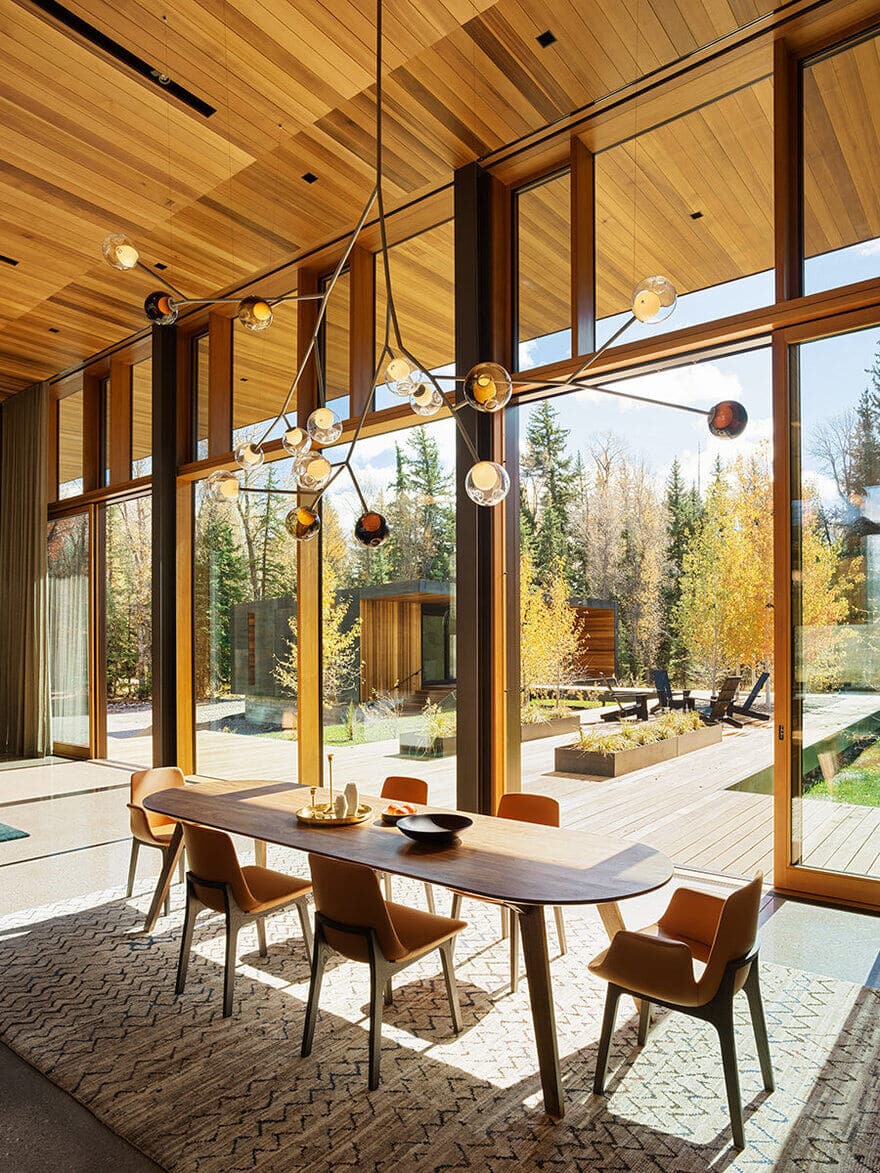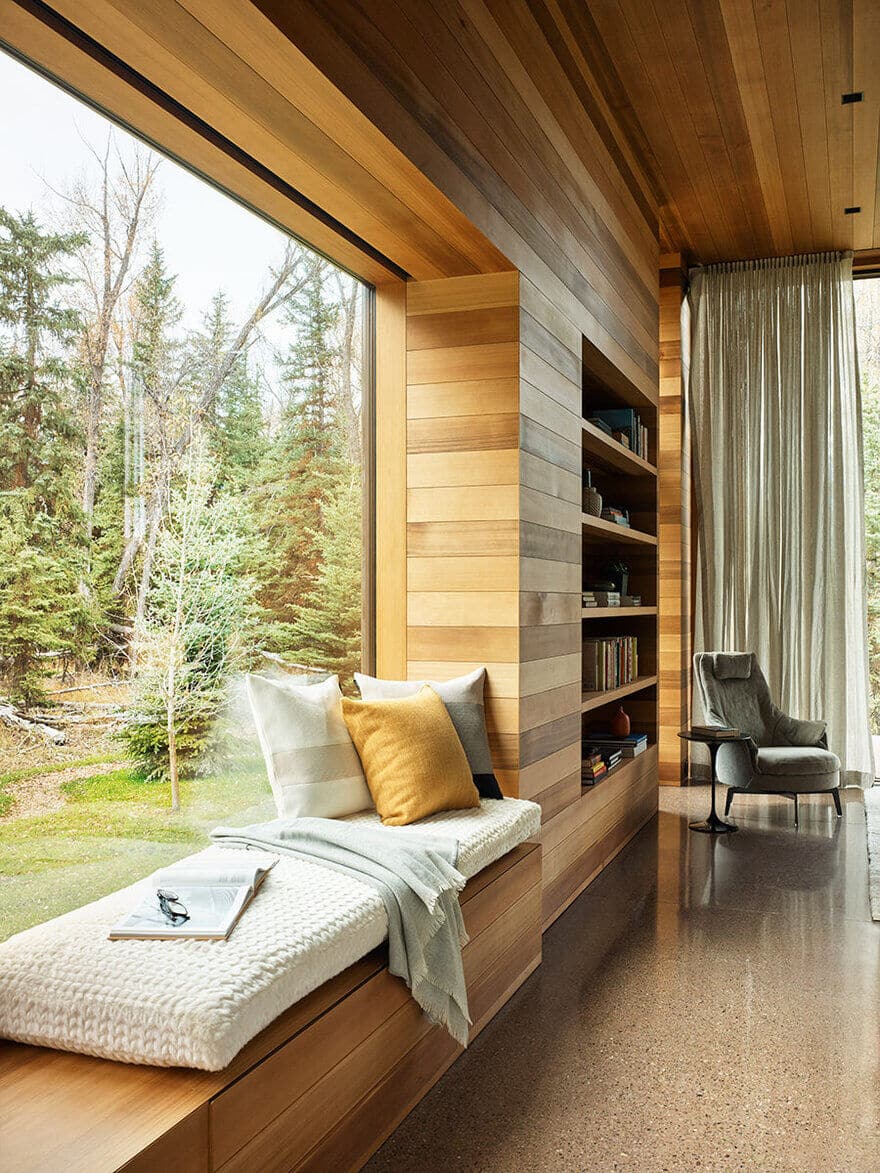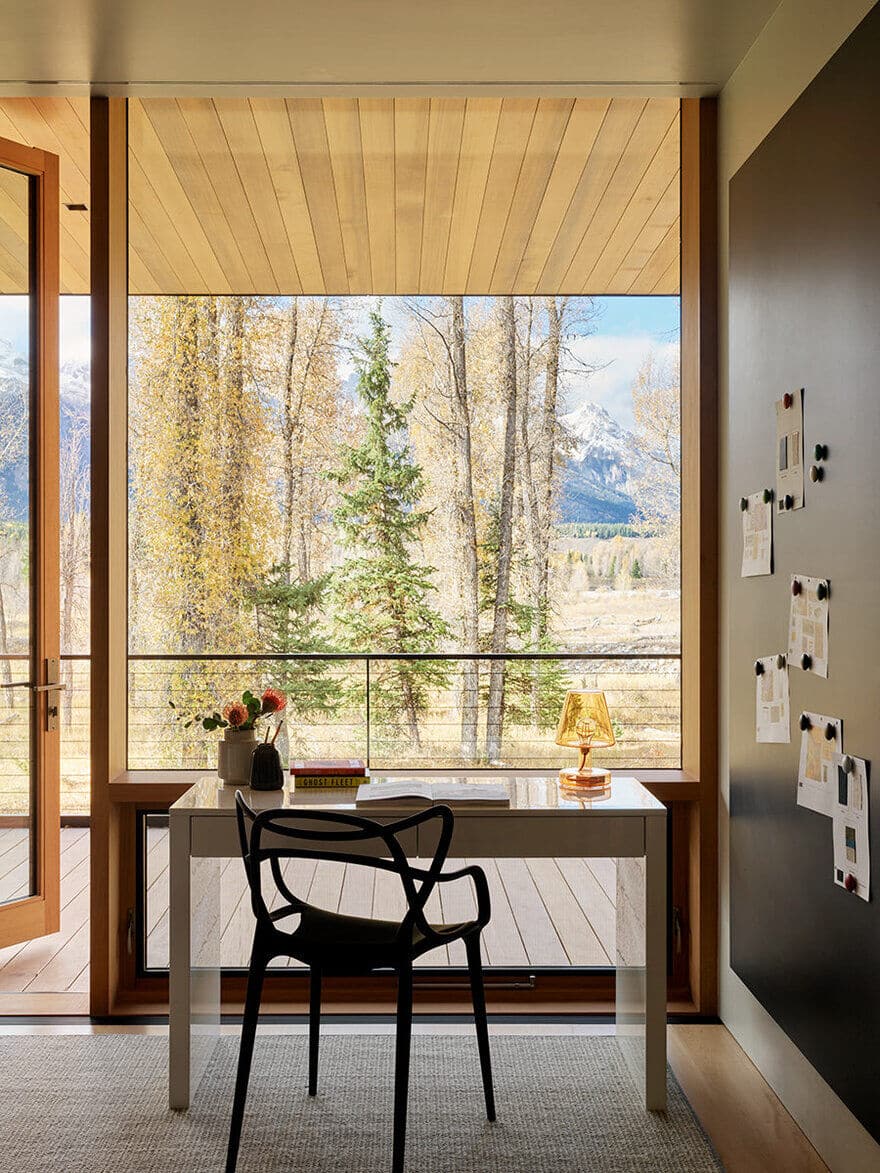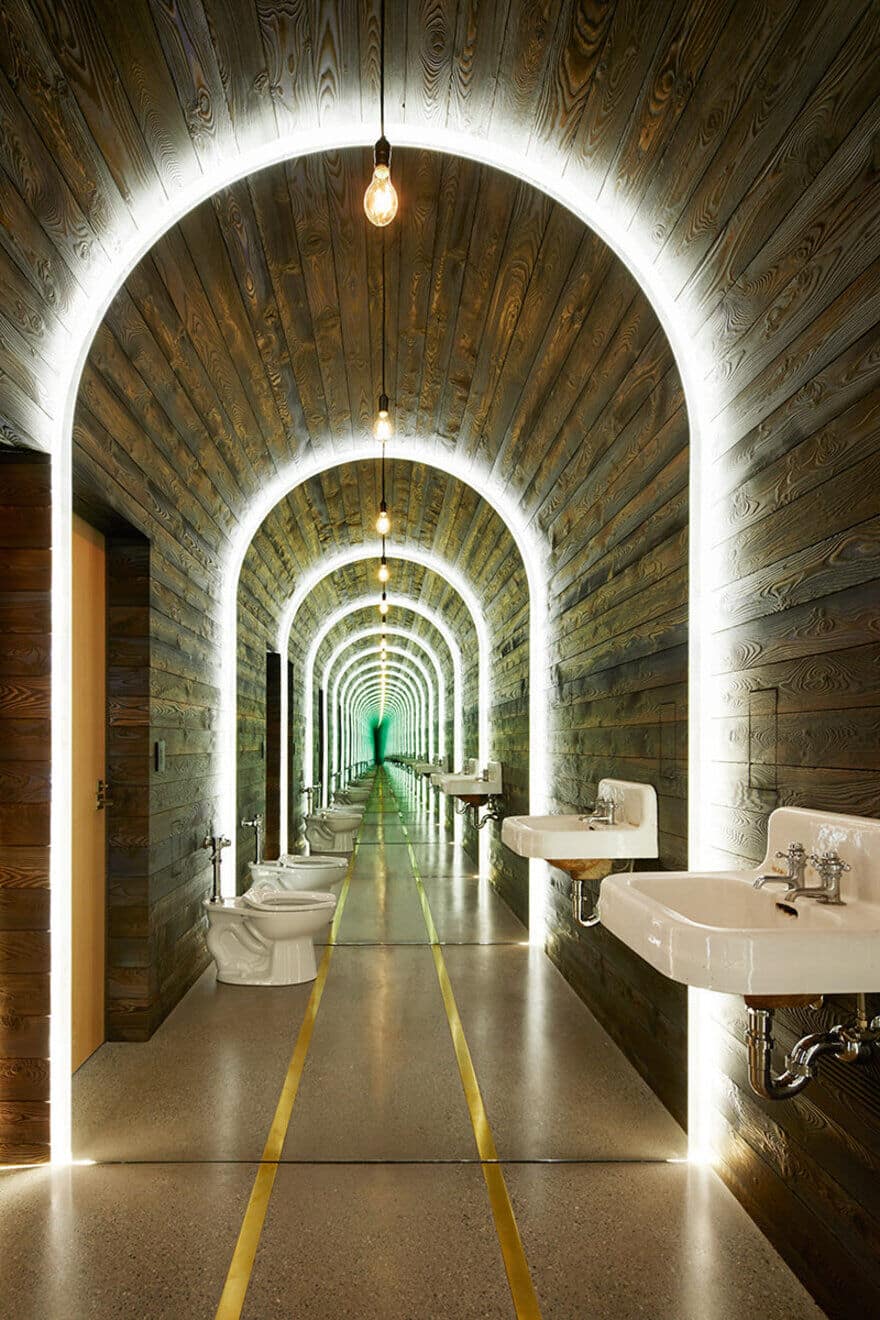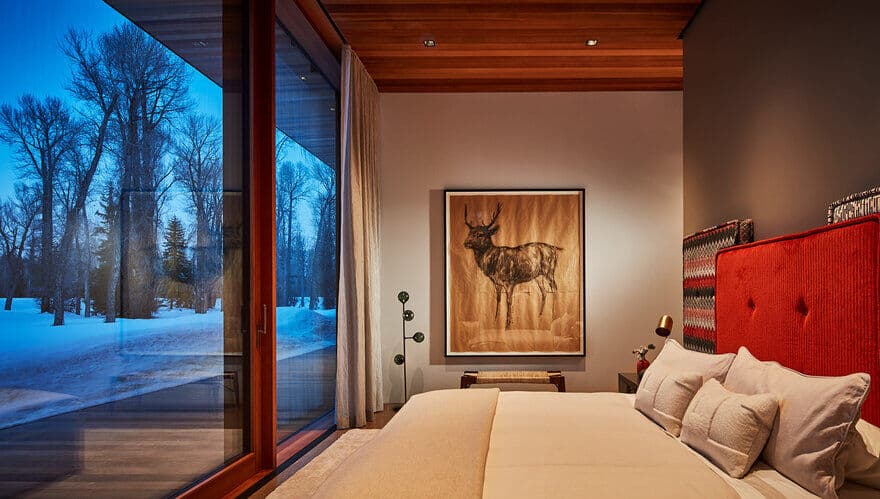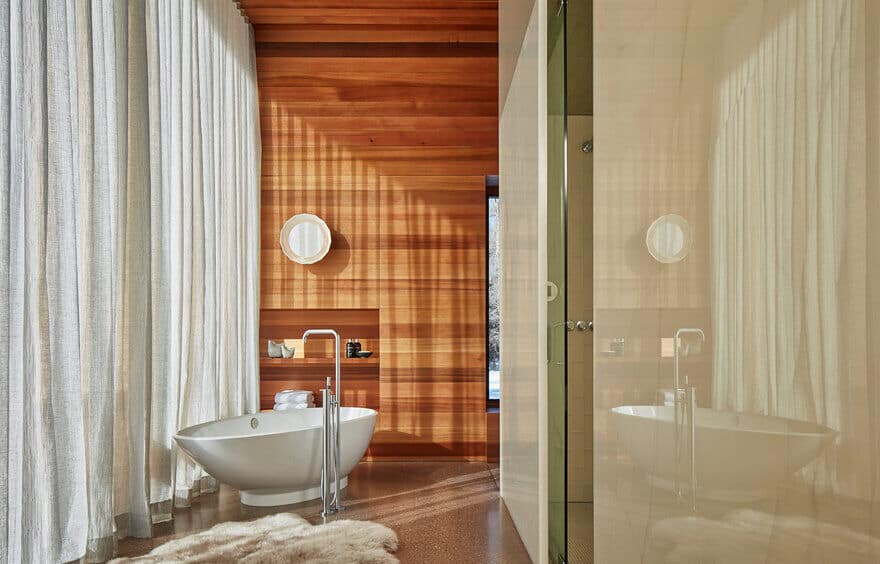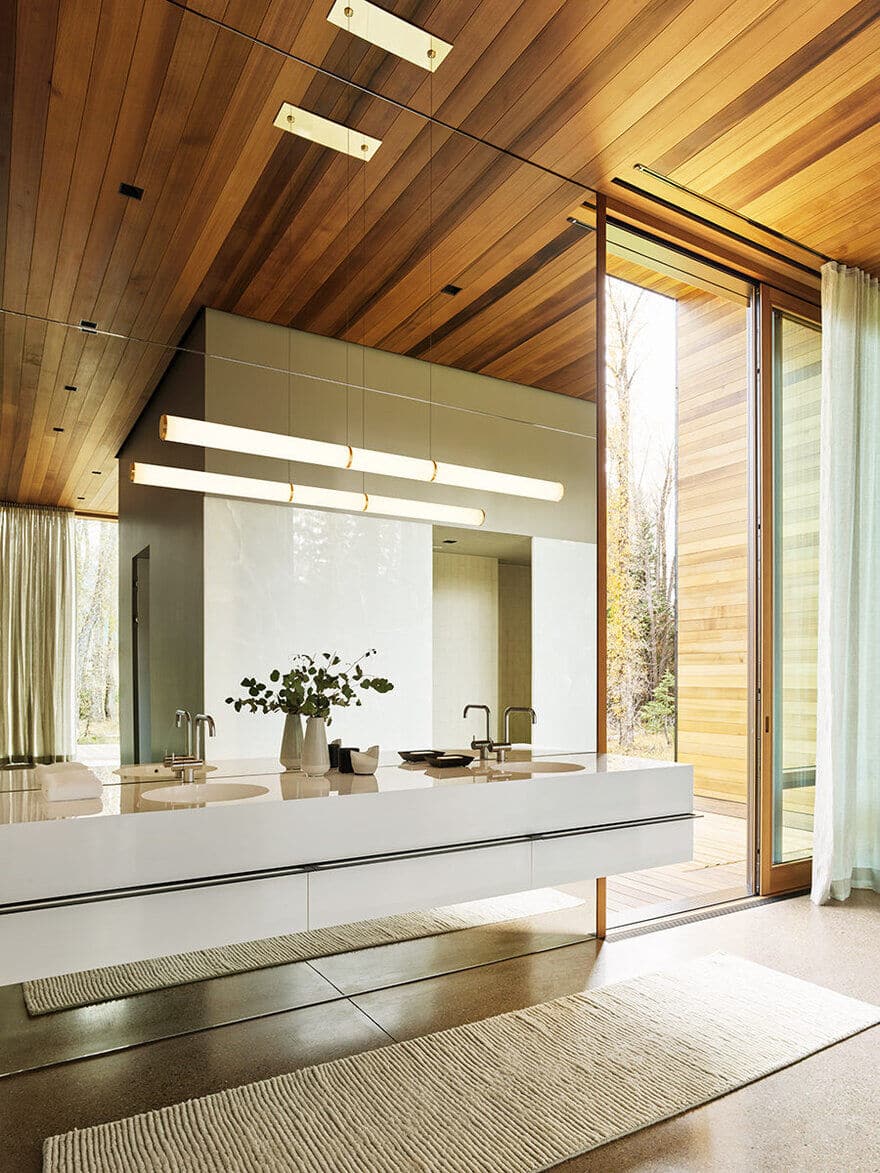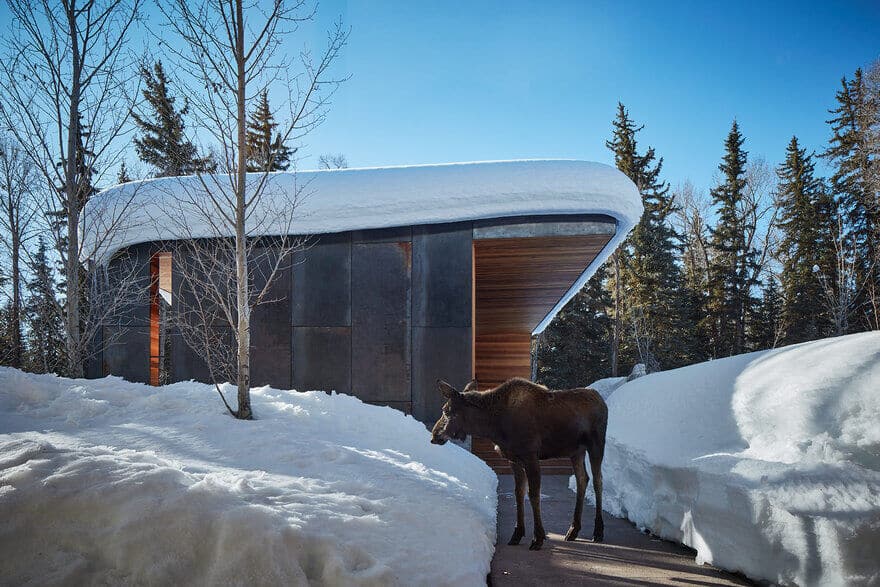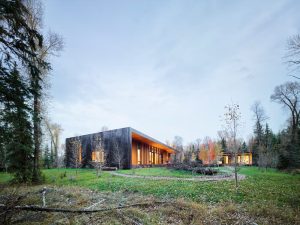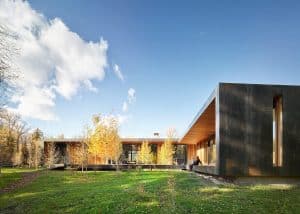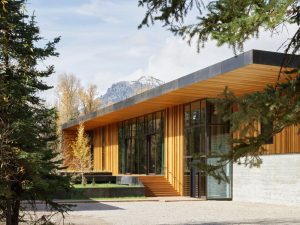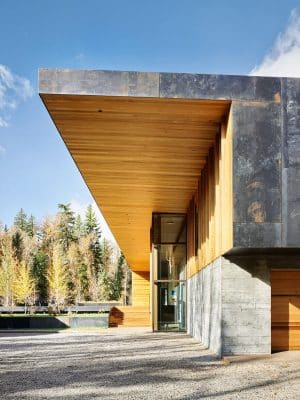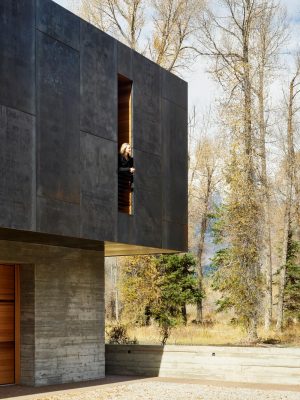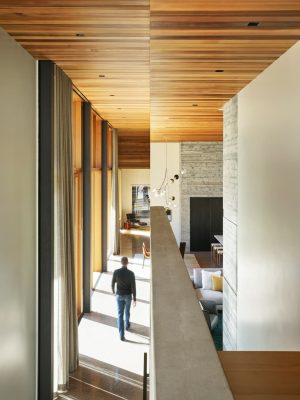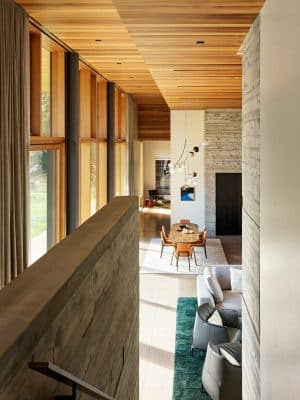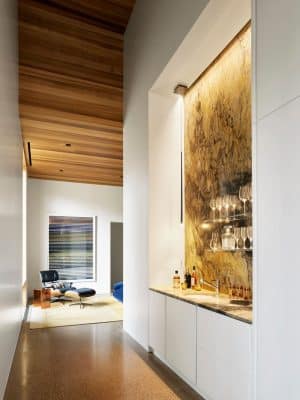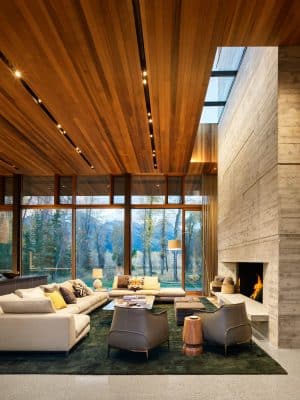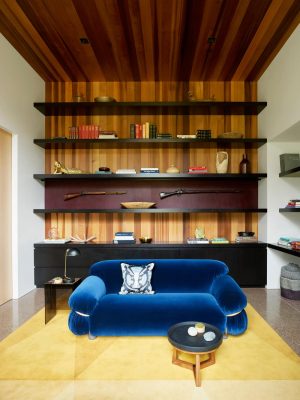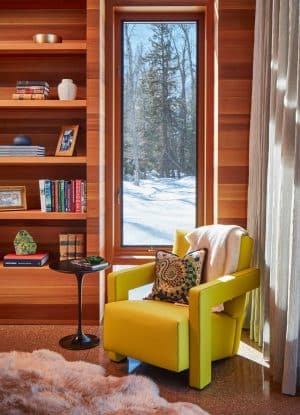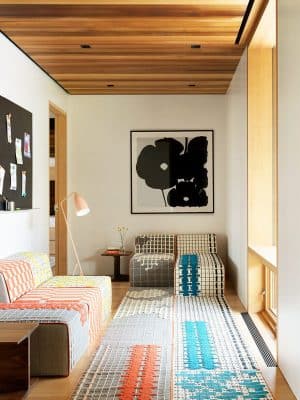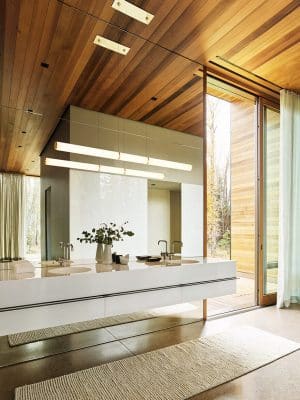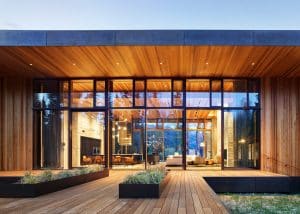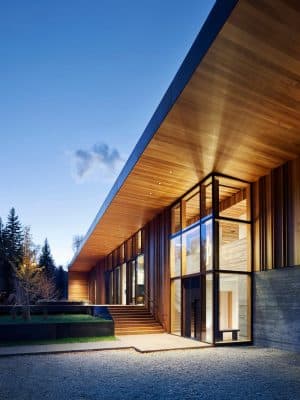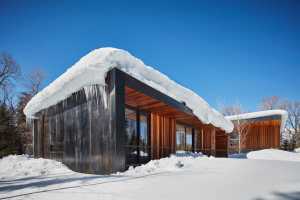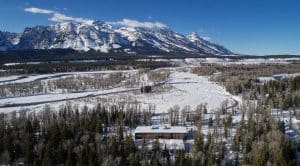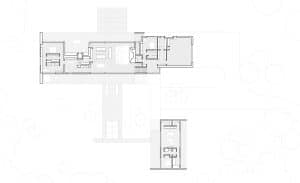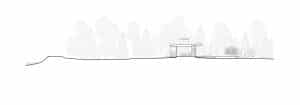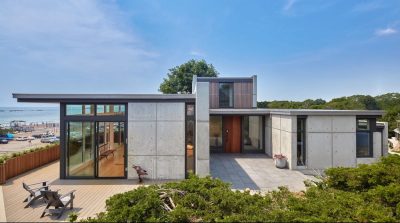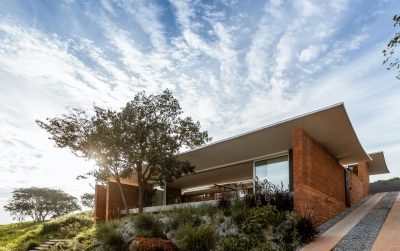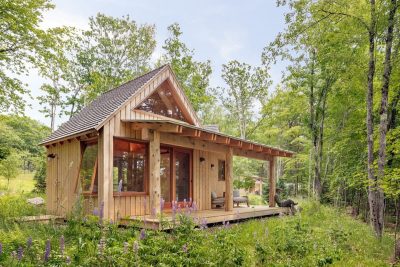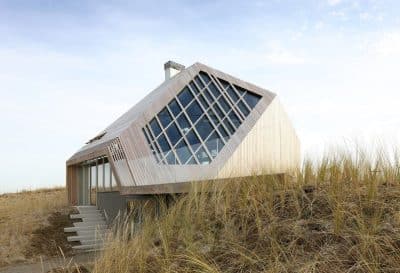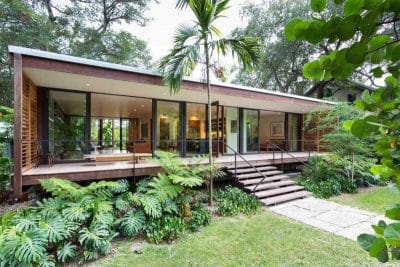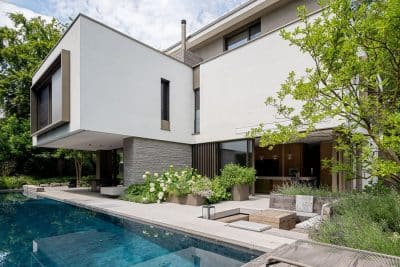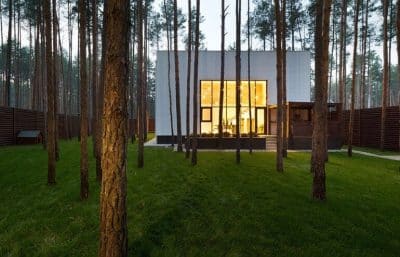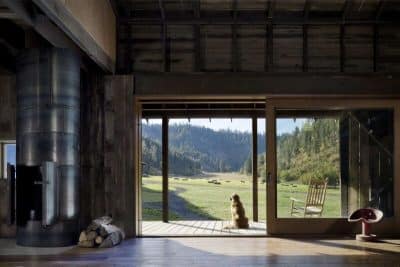Project: Riverbend House
Architects: CLB Architects
Architecture Team: Eric Logan, AIA, Principal; Kevin Burke, AIA, Principal; Bryan James, AIA, Project Manager; Leo Naegele, Project Coordinator; Libby Erker, Interiors
Contractor: Peak Builders
Landscape: Hershberger Design
Civil Engineer: Nelson Engineering
Structural Engineer: KL&A, Inc.
Mechanical Engineer: JM Engineers PLLC
Electrical Engineer: Helius Lighting Group
Geotechnical Engineer: Jorgensen Geotechnical, LLC
Lighting: Helius Lighting Group
Location: Jackson, Wyoming, United States
Completion year 2018
Photo Credits: Matthew Millman (fall), Tom Harris (winter)
Courtesy of CLB Architects
Riverbend House is a family retreat located on the east bank of the Snake River adjacent to Grand Teton National Park. The house nestles against the river, which forms the north and west perimeter of an 18-acre wooded property that features dramatic mountain views to the north through a veil of cottonwood trees. A careful study of the relationship between the site, river, and mountain views beyond led the architects to elevate the main floor of the 6,257-square-foot house six feet above the natural ground plane. The result is architecture that engages with its riverine and mountain setting.
The elemental forms of the main and guest houses surround a south-facing deck and a grove of aspen trees. Resting on bases of board-formed concrete, the Riverbend house is wrapped in low-maintenance steel plate as protection from the harsh climate and to provide simple fire resistance. Large overhangs shelter deep-set niches which are wrapped in cedar and feature floor-to-ceiling glazing. Exterior decks connect the main house to the guest house and further unify the design. The main house features a double-height, glazed entry that projects toward the driveway approach. On the river side, a protected deck runs the length of the house, rising to the second story on the east. This multipurpose outdoor space serves as an extension of the living room, dining, and kitchen, and provides access to the river via a series of platforms that descend to grade.
Riverbend’s minimalist material palette balances toughness with warmth. The large expanses of cedar siding are interrupted with vertical cedar fins that add texture and shadows, which change throughout the day. Over time, the steel will develop a patina; ultimately the building will exchange its black shell for a rusty one, further integrating into the site.
Inside, cedar walls and ceilings convey a cozy richness throughout. Board-formed concrete masses anchor the entry and living spaces and bookend the open-plan living area. The concrete floor on the main level and beech flooring on the upper level complement the cedar and add an informal and comfortable feel to the expansively glazed spaces. While texture and color reflecting the personality of the client are introduced in interior furnishings, the overall restraint of the architectural palette creates a built experience that has the feel of a quiet platform set amidst the trees.

